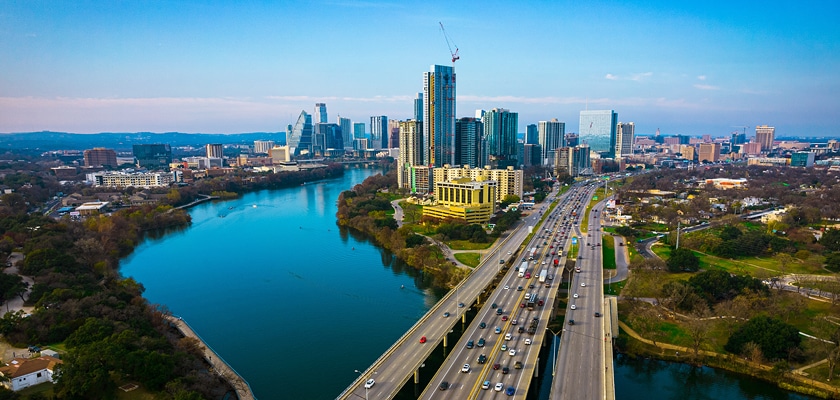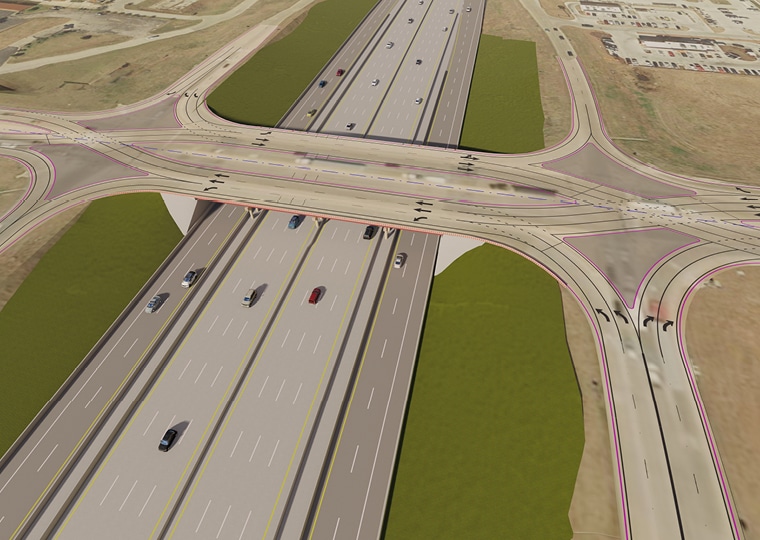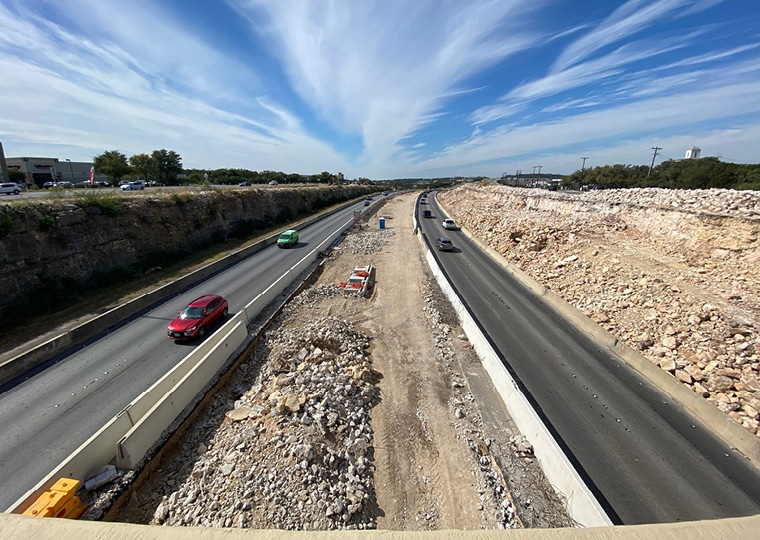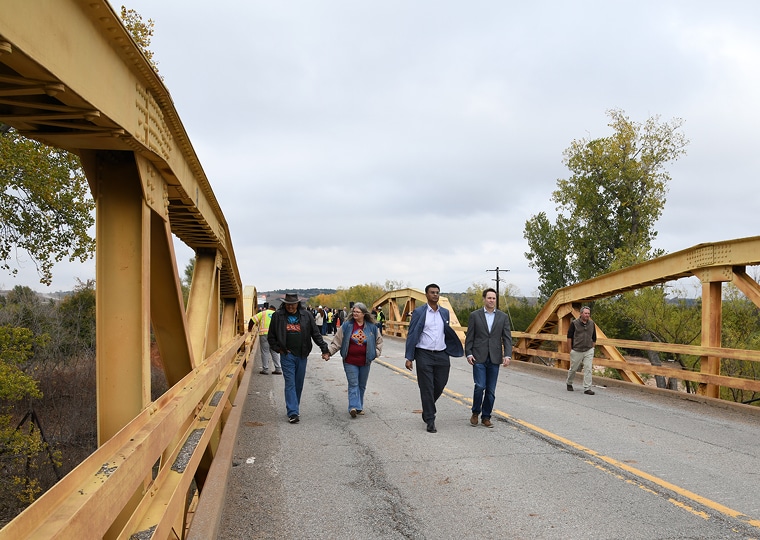
Known for being one of the most congested highways in the nation, as well as one of the oldest freeways in Texas, I-35 in Austin is undergoing a transformation.
STV’s design team recently celebrated a key milestone in the Texas Department of Transportation (TxDOT’s) I-35 Capital Express Program with the project’s groundbreaking in Austin.
STV is serving as the prime schematic engineer for the project, which is valued at over $600 million and represents one of the most significant mobility projects in the Central Texas region. Austin’s I-35 corridor, which carries over 200,000 vehicle trips per day, serves as a main highway link between Mexico and Canada and is a vital thoroughfare serving North America’s trade system.
It’s also the largest single let Design/Bid/Build construction project in TxDOT history. The firm’s scope of work for the 11.5-mile project, which spans SH 45N to US 290 East in Travis and Williamson counties, includes the design of one managed lane in each direction with intermediate ingress/egress access points, auxiliary lanes between ramps and 30 proposed ramps or ramp modifications. It also includes designs for four signal bypass lanes and collector distributors, 10 grade-separated intersections with five replacements, a new Diverging Diamond Interchange (DDI), hydraulic crossings, and accommodations for future direct connectors. Additionally, the team developed a NEPA Environmental Assessment with over 220 parcels for additional Right of Way (ROW).
Several atypical elements made this project challenging and unique. A third-level bridge/signal bypass was designed over Tech Ridge Boulevard, with I-35 running below ground, frontage roads near natural ground elevation, and the proposed structure as the third level over the frontage road and cross street. Having a bypass positioned over a cross street, with three levels, is very rare.
To arrive at this unique solution, the team performed a traffic analysis to find ways to increase operational efficiency and improve safety on the roadway. Other key project elements include a separate signal bypass bridge structure at Howard and Rundberg Lane, as well as a DDI innovative intersection at Wells Branch Parkway for safety and traffic flow management.
In addition to the distinctive layout, an accelerated design schedule also presented unique challenges. Over the course of the five-year project, the scope and limits were modified to meet changing funding limits, legislature requirements for toll roads and logical termini for adjacent projects. STV’s team coordinated closely with TxDOT to meet the accelerated schedule and required design schedule overlap with the plans, specifications and estimate (PS&E) development team. Extensive coordination with local agencies, such as CapMetro and the cities of Austin and Round Rock was done to accommodate access points and transit direct access T-Ramps or inline stations to I-35.
“Any large project that has budgetary and schedule constraints is challenging, however, they tend to be the most rewarding when completed,” said Anthony Serda, STV’s project manager for CapEx-North. “You have to be able to pivot quickly in our line of work, reassess, and determine how to move forward to align swiftly with project changes. Due to the sheer volume of traffic and economic impacts I-35 has on the region, ensuring our plans were constructable and timely were the key drivers of our team’s and project’s success.”
STV has now played a significant role in all aspects of the vital I-35 corridor through Austin, including serving as the prime PS&E engineer for I-35 Capital Express South, the second-largest Design/Bid/Build let project ever at nearly $550M for TxDOT, as well as serving as a subconsultant on schematic and environmental work for I-35 Capital Express Central, which will likely be the next largest ever design/bid/build project for TxDOT. Collectively, these three segments of I-35 represent a significant opportunity to enhance mobility in the region. The redesign of I-35 in Austin will also address historical barriers such as racial and economic inequities by eliminating the physical barriers.
“It’s been really meaningful to work on all three of these projects that will help connect and transform communities that so many people use on a daily basis,” said Serda. “We are proud to be a part of these historic projects.”






